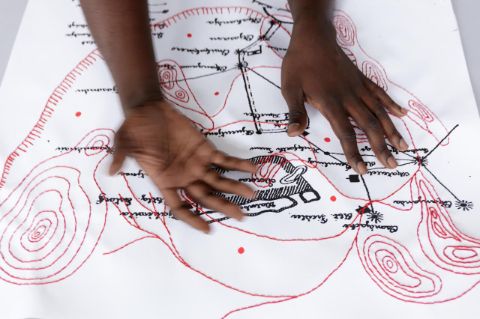From Windhoek to Kamina to Nauen
Frederike Moormann, Nashilongweshipwe Mushaandja, Angelika Waniek, Tuli Mekondjo, Dieter Daniels, Luka Mukhavele, Gundolf Nandico, Friedrich Lober, Lefteris Krysalis, Robert Machiri. Presenter: Frederike Moormann
Presentation
Sat., 21.10.2023
15:00
Safi Faye Hall
Free entry
Language: English

Photo: Gustav Franz
Horns call. Masts transmit. Satellites fly. This presentation on the (post-)colonial violence of electric telecommunication infrastructures and resistance against them emerged from a transcultural dialogue—evolving around questions of making the silent documents hearable, unveiling violence, and re-telling the history of technology.
In 1911, the first wireless telegraphy connection was established between Windhoek (Namibia), Kamina (Togo), and Nauen (Germany). This development followed a history of violence, as wireless telegraphy was first "tested’ during the war against and genocide of the Herero and Nama people[1]. Innovation and exploitation form cyclical relationships: technical innovations facilitate exploitation, which, in turn, enriches the exploiters, enabling further technical innovations that are subsequently utilised for exploitation. For several thousand years, horns have been used for communicating with the far-away. Maybe the development of technological apparatuses was only possible on the basis of this much older knowledge. Today, the glass fibre cables are running along the same lines as nineteenth-century telegraphy cables, and 10,000 satellites made up of metals and rare earths dug from Sub Saharan mines are spinning above our heads. What does all of this mean for tomorrow’s communications infrastructure?
A performative presentation including original sounds and horn music.
[1] The war itself was sparked by the Germans constructing a railway line from Tsumeb (in the north of Namibia) to Swakopmund (on the coast), cutting through the grazing lands of the Herero, in order to transport the copper extracted in Tsumeb to Europe. This copper, in turn, was essential for telegraphic cables and electrical infrastructure.